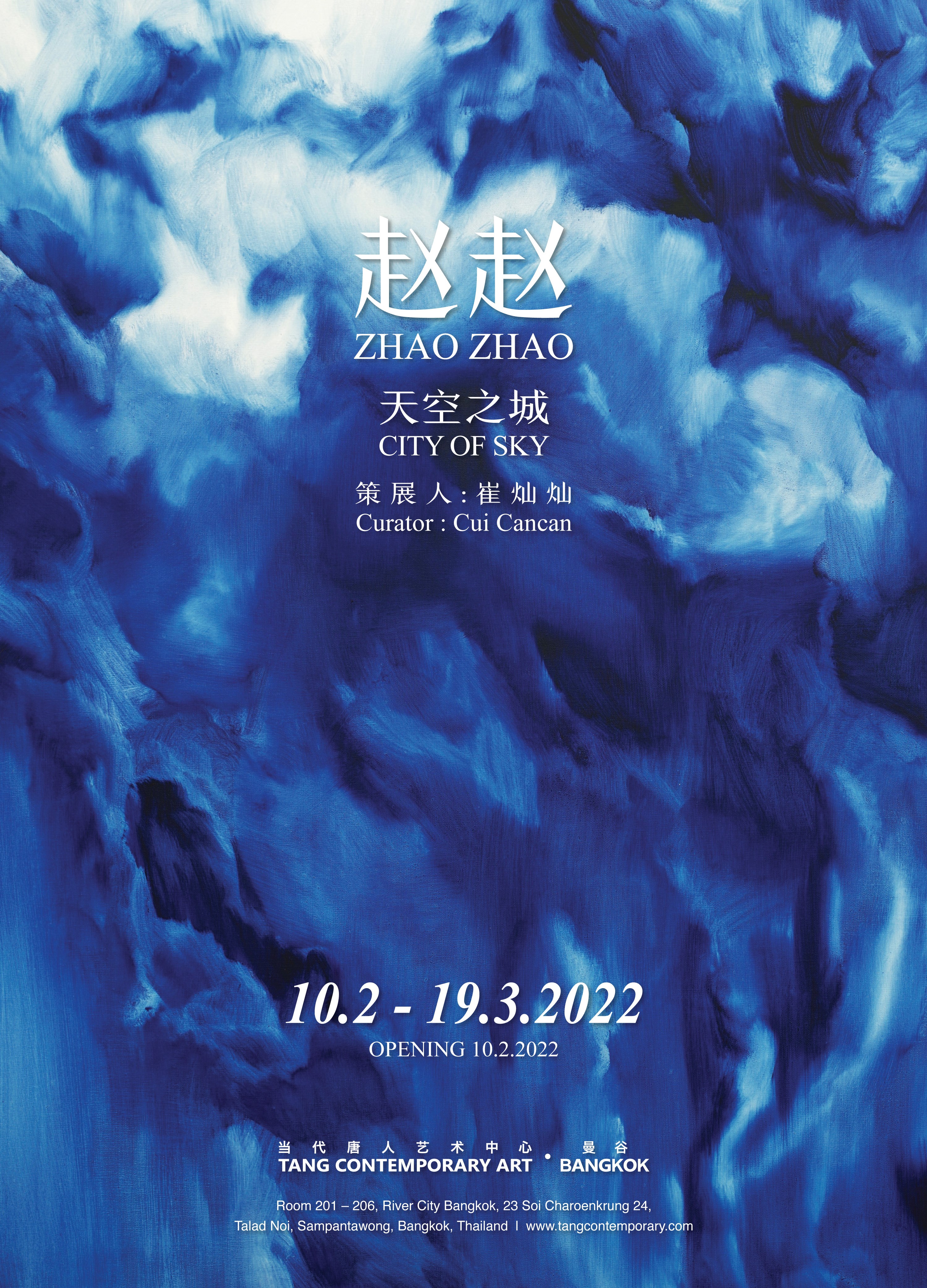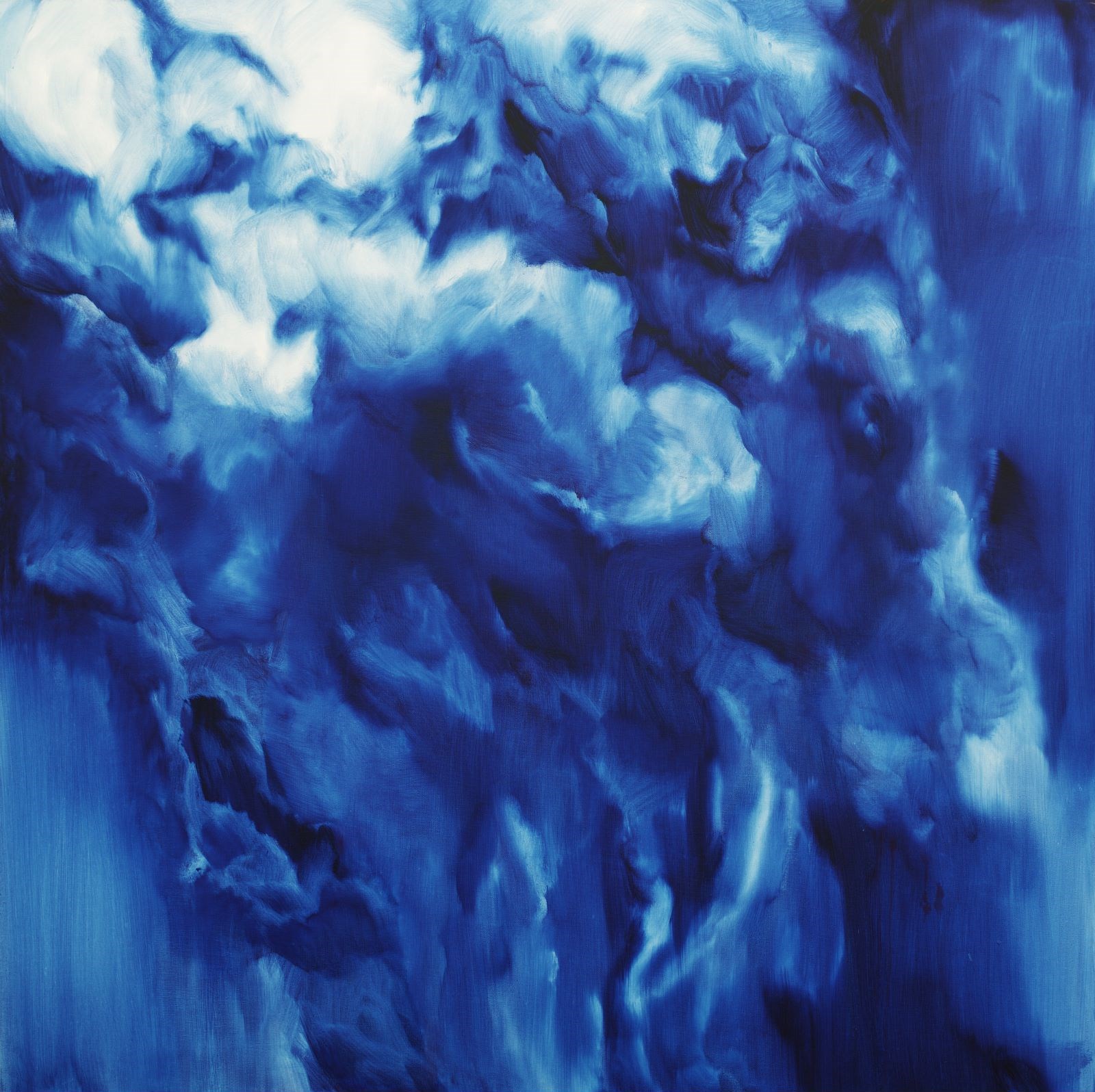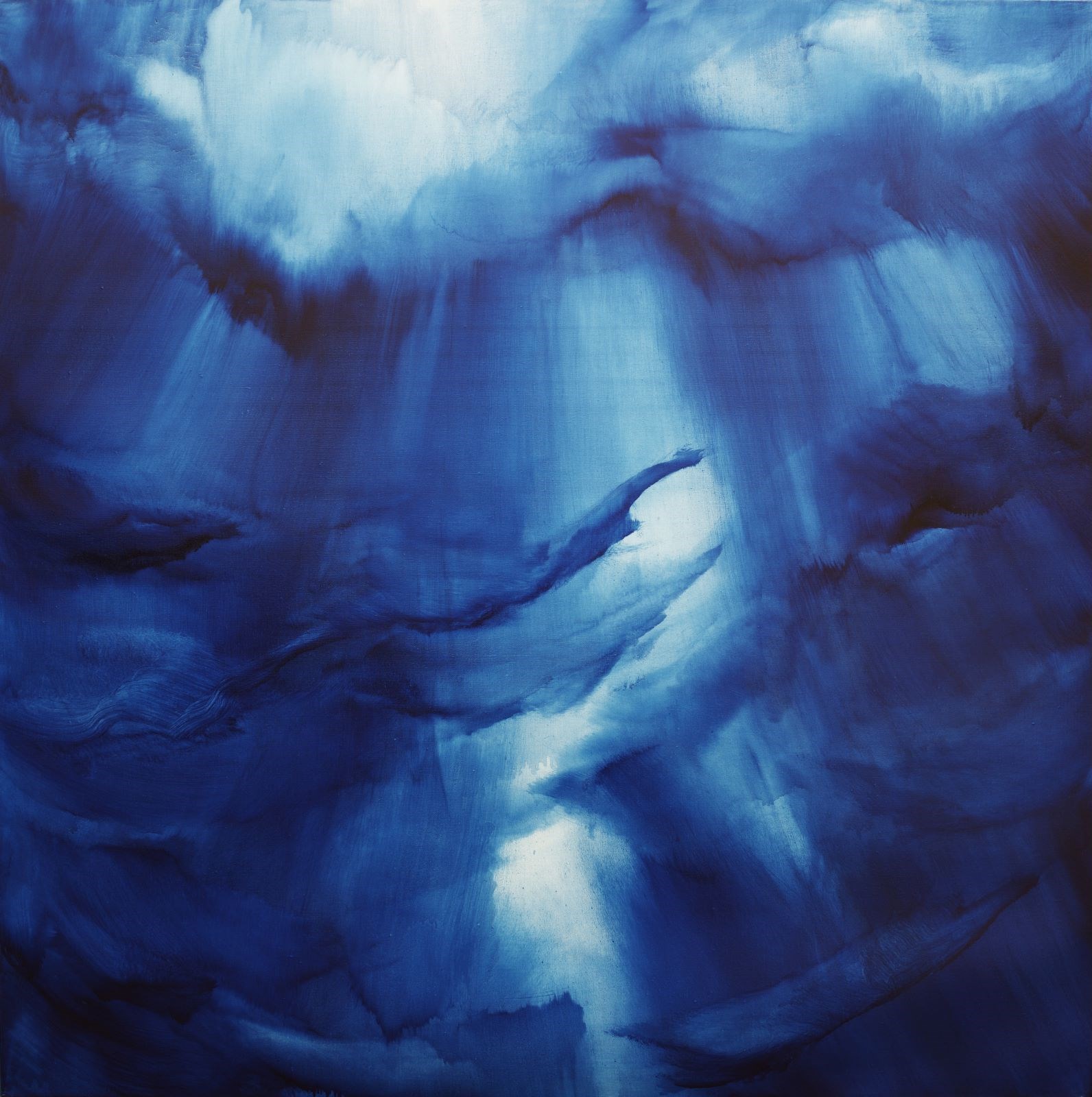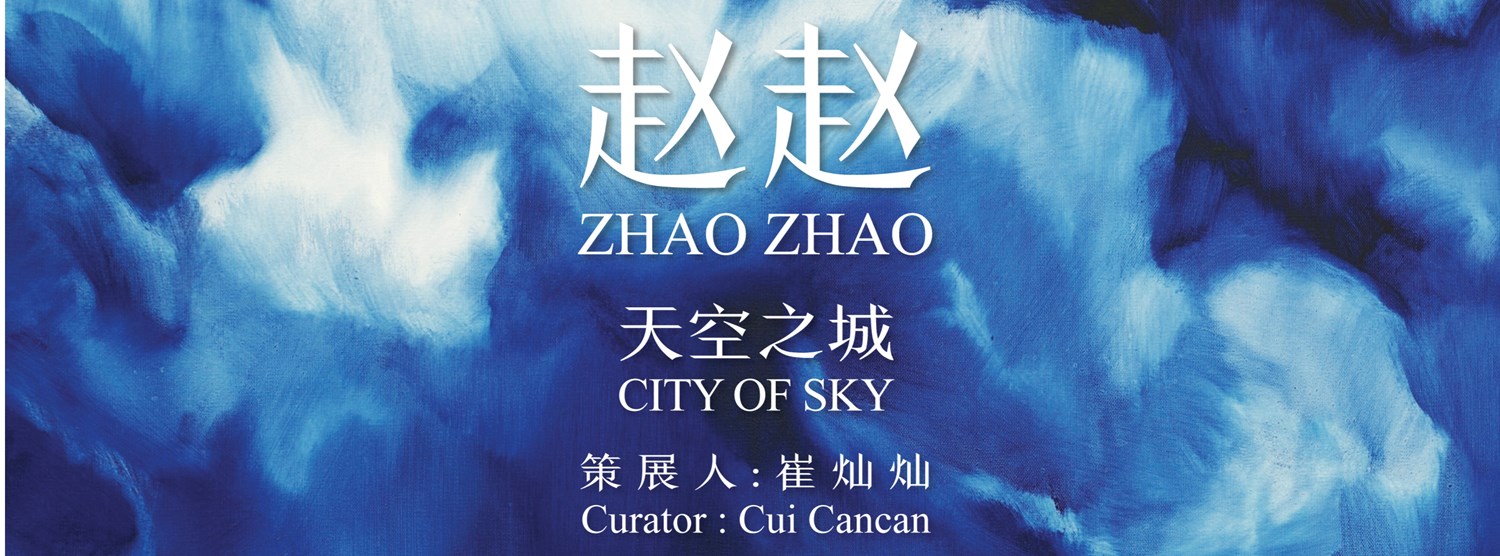
City of Sky : Zhao Zhao Solo Exhibition
Artist: Zhao Zhao
Curator: Cui Cancan
Exhibition Dates: 10 February - 19 March 2022
Venue: Tang Contemporary Art Bangkok
Opening Reception: Thursday, 10 February at 4:00 PM
Tang Contemporary Art is proud to announce the opening of "City of Sky", the latest solo exhibition by Chinese artist Zhao Zhao, curated by Cui Cancan, at Tang Contemporary Art's Bangkok space. The exhibition will run from February 10 to March 19, 2022, and will showcase a series of sky paintings developed during the artist's decade-long tour of various countries and towns. It contains sky fragments from Renaissance paintings, clouds from antique Chinese paintings, and blue sky shades from several
countries, creating a distant vision that crosses time and space.
We look up at the sky above, tens of thousands of feet above the ground. The sky is also forgotten; the shapes of the clouds silently, listlessly change, but they are always forgotten by busy people. The sky's the city of the anonymous; people look up to the sky-spellbound, gazing, staring, and quiet. Skies also have their own skies, with their own kinds of clouds and a range of colors. In different circumstances and moods, the sky is imbued with emotion and can comfort us in the loss. Different fates always exist under the same patch of sky. The sky fulfills many dreams and conceals countless disappointments; it encompasses flying humans and the weighty Earth, the vast universe and a tiny speck of dust, historic changes and epoch-defining losses, the fantasies and paradises of mythology, and the closed haze of our mundane world.
Zhao Zhao began creating Sky in 2009, making it his longest-running subject and one of the starting points for his works in painting. In a series that has lasted for more than a decade, Zhao Zhao uses a symphony of brushstrokes to depict different skies. Brushstrokes of different lengths clearly demarcated rhythms, and shifts between near and far are transmuted in these dozens of sky-related works. This rich Sky series constructs a pictographic and ideographic painted world, replicating a two-fold story about the reality and art history of the sky.
This story stems from two places. In 2009, Zhao Zhao painted the first Sky, and the piece was shown in Berlin a few months later. At the time, Beijing's haze had just entered the public consciousness, and people did not know that they should occasionally look up at the sky when it was blue. In the years that followed, the blue sky went on a long hiatus. After the short-lived "Beijing blue" of 2008, broad swathes of northern China experienced more than a decade of smog and haze; this became the context for-or the first real context for-Zhao Zhao's Sky series.
The sky began from a realist foundation, but it became an everyday reality in a surrealist way. That year, Berlin's usual sky gained a stripe of Prussian blue from Beijing; the color returned to its source, highlighting two decidedly different realities.
Three years later, Zhao Zhao spent a period in solitude, and in that place and time, he repeated the same things in a standardized space. The walls and floors of that one room never changed, and he did not know when he could leave. As in The Royal Game, he accidentally immersed himself in a game with an unknown endpoint. Every day, all he had was a high window resembling a 20x20 cm frame as a connection with the "outside" world, the only thing that could change. With the perpetual grey of Beijing at that time, the sky was just a recurring presence. In his confinement, the world implied by the window added a layer of boredom and helplessness.
The occasional blue sky became the only surprise in his life, and Zhao Zhao spent a long period without blue sky. When every day becomes part of a monotonous cycle, we can only record our moods and note the ebb and flow of our emotions. Time no longer moves forward; it travels in a circle. Under Beijing's hazy sky, there was no division between cloudy and sunny days, or between seasons; life simply circles around a center. In a seemingly stagnant life, the sky is controlled by a model that never changes-we spend our lives in grey.
In this way, the sky became a broader reality in Zhao Zhao's life and work. Since 2009, Sky has fused different forms of reality and history over more than a decade. He has lived in different cities and traveled to many countries, witnessing the cracks between New York skyscrapers, the mutable clouds over Victoria Harbor in Hong Kong, the sea and sky merging in the distance from a California beach, and the calm afternoon clouds over Taipei. In museums and catalogs, Zhao Zhao saw many art historically important works and the stories in them, but they did not really interest him. Instead, he chose the sky in the background as the subject of his paintings. When the story is removed, the sky becomes a stage without actors, and the backdrop to the play becomes like the turbulent background in a history painting or the empty, realist clouds in ancient Chinese
paintings.
Sky also evolved into an art historical compilation, a re-creation of its imagery; the sky performs different missions and roles in different schools and works of art; it is a natural element that sets off the story and expresses emotion. In Medieval painting, the sky highlighted the sacred halos of religious figures and served as a witness to God's arrival on Earth. In various paintings of the birth of Christ, a holy light emanates from the sky, illuminating all things. When Moses parted the Red Sea, the sky was a turning point in the story of this impressive feat. During the Renaissance, the sky reflected human nature, becoming calmer and more benevolent. The rise of humanism heralded the beginning of an all-new era of the sky. With the emergence of Realism and Romanticism, the sky once again became a stage for historical events and tumultuous weather; it presaged the dusk of the old era and the dawn of a new one. During this period in history, the sky was a foil for Iyricism. The night sky, daybreak, morning mist, withered trees, or ruined buildings revealed decidedly different aesthetic images and spiritual worlds. Finally, the Impressionists ended this period in history, and the sky was seen through the lens of the natural sciences. At different moments in the day, late nineteenth century artists painted the way that light and air played in the sky. As a result, the historical sky became a personal sky; because of the Wright Brothers' plane, the sky no longer belonged to God and became a realm in which
humanity could soar free.
The sky is realist, but also romantic; it has carried the feelings and moods of different eras and extended the meanings and emotions that history has imbued. A melancholy sky, like the one in Maurice Utrillo's dream of Montmartre, sealed a beautiful, nostalgic Paris, a city of dreams where talented people congregated. A pure sky, like in Hayao Miyazaki's music for Castle in the Sky, constructed a pure fairytale world of graceful melodies and moving emotion. A tranquil sky surveyed the ancient Chinese as they watched flowers blooming and withering in the courtyard and the clouds unfurl overhead. Or, as Rabindranath Tagore wrote, "I leave no trace of wings in the air, / but I am glad I have had my flight."
The sky also seems like a secret, an extremely poetic concept. Time passes in the sky, carrying our pasts. Under every patch of sky hides a myriad of promises and secrets. While we bustle around the city, the sky is like a boundless river, running through the towns and fields, passing through the peaks and valleys, wending its way through the looking and forgetting.
In 1986, the poet Hai Zi wrote, "The sky has nothing, / why does it comfort me?" Prussian blue is the only color in Zhao Zhao's Sky, and that simple and consistent color, as Hai Zi wrote, seems to contain nothing. However, we just need to stop for a moment and carefully observe the details, so that we can discover that, in those different brushstrokes, shapes, and movements, the energy implied by the sky--the presence and meaning of the sky's power--is only revealed through change.
Sky has become an important series for Zhao Zhao; once merely the background of a painting, the sky has become its only subject or content, opening up an all-new artistic theme and style. Repeated creation and variation prove that, in a reality filled with loss and unease, we can still look up at the benevolent sky to find the potential for a new world constructed of boundless imagination.




 ไทย
ไทย







